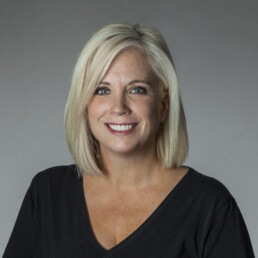Travis Shumake to Honor Father's Upset Win with Tribute Car at Auto Club Finals
TRAVIS SHUMAKE TO HONOR FATHER’S UPSET WIN WITH TRIBUTE CAR AT AUTO CLUB FINALS
NEW YORK, NY (November 7, 2022) — 40 years after his father Tripp’s upset Funny Car win at the 1982 World Finals, Travis Shumake will return to southern California with the same goal. In 1982, the elder Shumake was brought in by Funny Car legend Billy Meyer as a “blocker” to defeat championship contenders Don Prudhomme & Frank Hawley. The single-race deal and Cinderella story ended with Shumake in the finals against Kenny Bernstein after taking out both Hawley and Prudhomme earlier in the day at what would be the last World Finals held at the famed Orange County International Raceway. This weekend at the Auto Club NHRA Finals, Shumake wraps up a successful debut season racing the Randy Meyers owned and tuned Top Alcohol Dragster with the support of Envision RISE, an evolutionary platform that utilizes Organizational Change Management (OCM), Human Resource Management (HRM), and Diversity, Equity and Inclusion (DE&I) to create a powerful integration and understanding between organizations and their workforce.
“Our partnership with Travis has created a direct path for us to connect in a unique way with the NHRA fan base and our clients,” said Envision RISE’s founder and CEO, Joseph Anderson. “Travis has been a huge supporter of our mission and has worked hard to demonstrate his commitment to becoming a top NHRA driver and an advocate for opportunity derived from hard work and respect.”
The second-generation driver will be channeling the spirit of his popular father and the surprise success of his 1982 win with a throwback paint scheme, helmet, and crew uniforms.
“I grew up watching a VHS of my dad’s magical day at World Finals. I still watch it. Regularly. I’m just as proud of his other wins and accomplishments like being in both the Cragar Five-Second Club and the 250 MPH Club but having the TV coverage and interviews make this race special. He’s been gone 23 years this Sunday and his finish line interview with Steve Evans is the only place I can go to hear his voice. I get to hear him, see him, and now I’m hoping my own finish line interview with Amanda Busick. Makes the hairs stand up on my neck.”
“I’m not just here to honor my dad, I’m here to win and wouldn’t mind facing off with one of the drivers in the hunt for the championship. We’ve got the car. Between me, Hunter (Green), Fiona (Crisp), and Matt (Sackman), this Randy Meyer “team B” car has been turning on win lights all season long. If the points stayed with the car this beast would be deep in the points battle.
Shumake grabbed a top 3 qualifying spot in Charlotte and posting a career best semi-final finish at historic Maple Grove Raceway where he won the first two rounds on impressive hole shots. This weekend’s Auto Club Finals will be his 4th national event and a chance for the New York City resident to close out his season on a high note and carry momentum into the off-season as he looks to expand his racing schedule in 2023.
“I’m chasing funding for 2023 just like everyone else but am starting to get excited about the future.” Said Shumake. “Right now I’m just enjoying the opportunity to learn from Randy and drive alongside Julie (Naatas). Add all the marketing help I’ve gotten from Megan (Meyer) into that mix, and you quickly realize I’ve been training under the best in the business all season long. I hope bringing big names like Sheetz and Envision Rise into the sport shows folks I am serious, committed, and certainly no flash in the pan.”
Shumake and the Envision RISE Top Alcohol Dragster will be on track twice on Thursday, November 10, running at 1:45 p.m. and 4:30 p.m. and teams will get a final qualifying run Friday at 2 p.m. Saturday will begin Shumake’s quest for victory with the first round of eliminations at 10:15 a.m.
About Envision RISE
Envision RISE was founded as a modern workforce development platform to create a non-divisive integration and understanding of the relationship between the needs of an organization and the requirements of the actual workforce. The platform provides a voice to the individual and a framework critical to long-term business sustainability.
Promoting a Culture of Calm During Chaos
Staci Hegarty, Envision RISE, Vice President of Equity & Inclusion
We are more than two years into the most intense period of change that most of us have ever experienced in the workplace, and for some of us, in our lifetime. After the initial shock, many organizations managed to adapt to life during COVID. Theses adaptations were far from perfect, and we are still working through it and learning from it. There is civil unrest across the US, which will not abate any time soon. The economy is teetering on the brink of recession, with inflation at a 40-year high and gasoline hitting record prices. The “Great Resignation” coupled with low unemployment pushed staffing levels to the breaking point. Many organizations are struggling to find their center. Those that have taken promoting a culture of calm during chaos seriously have been better able to weather the storms.
We are not our best selves right now.
And yet, we have done some of our best change management over the past couple of years. We were so confident in what we believed to be true for so long that we rarely questioned it. When forced to question almost everything, look what we discovered! We can be flexible in our work locations and still get results. We can engage in uncomfortable conversations about topics we were always told were off limits at work, which allows us to learn more about ourselves and our colleagues. The economic issues we experience are not in a vacuum; we are an inextricably connected global economy. Finally, we can demand better from our workplace cultures, or we can find a better workplace.
For those waiting to “return to normal,” I have bad news for you. There is no going back. The last few years exposed many truths about our workplaces and how we are affected by that culture. Crisis shows us our true selves.
Amid chaos, what was the prevailing emotion at your company? Did you find out that your organization is much more fragile than you realized? Or did you uncover innovation and resilience that was just beneath the surface of everyday life?
Understand more about your company by understanding its DNA. Your company’s DNA structures the ecosystem framework. Upon this framework is built the foundation for your culture throughout the employee lifecycle. When the DNA is fragmented, broken, or otherwise unstable, it creates an imbalance that compromises the health of the organization. Unhealthy organizations struggle to overcome the stress of change, especially unexpected change. The RISE Human Resources Management (HRM) DNA analysis helps identify the areas that need attention and strengthening. Combine the HRM DNA analysis with the Envision RISE comprehensive cultural assessment to create an actionable strategic plan for lasting organizational cultural transformation.
Hiring the Right Chief Diversity Officer the First Time
Staci Hegarty, Envision RISE, Vice President of Equity & Inclusion
Most people with the responsibility of hiring new employees have had at least one experience with a “bad hire.” I don’t love that phrase, it somehow places blame on no one and everyone without encouraging any accountability within the process. But for lack of a better phrase, I’m going to use it.
Bad hires are expensive for the company and the culture. Salary, benefits, maybe relocation, and training are all sunk costs for every new employee. The hope is that the new employee will contribute to the organization in a way that is productive, thus justifying these costs. A new employee likely left another job to accept this opportunity. They accept that there are costs to a new job, even if it is a higher salary. For a while, everyone is investing, and no one is really seeing dividends. Most of the time the investment pays off and the new hire works out.
When they don’t work out, there are consequences for everyone. Not just the monetary output from the company, but what a bad hire can mean in the long run. An underperforming employee often comes with a negative attitude, which has an impact on colleagues and customers. That negativity can spread quickly to employees who used to be contributors. There are expenses that are difficult to quantify, such as lost productivity during the initial training and learning period. Most projections are that when a new hire doesn’t work out, it is often a cost of more than $100,000 to the company in losses.
What happens when a “bad hire” is your Chief Diversity Officer (CDO)? The field of diversity, equity, and inclusion is notorious for high turnover and burnout. The qualifications for the role are often unclear. What kind of degree should the person hold, if at all? How many years of experience are appropriate (hint: stop looking for the “10 years of experience” unicorn, there aren’t many of us who meet that requirement)? For many organizations, this is a new role, with a vague job description, minimal budget, no staff, and a reporting structure that can be stifling for a DE&I expert to execute their duties. Yet the expectations for measurable, immediate change are high (if not impossible).
While sometimes they are reviled, other times they are encumbered with unrealistic expectations of patience, compassion, and forgiveness. A bad hire in this role can set your DE&I efforts back more than not having created the role in the first place.
Everyone in your organization is watching your CDO. They set the tone for what the cultural shifts will look like. They are responsible for the psychological safety of your employees, often while sacrificing their own. While sometimes they are reviled, other times they are encumbered with unrealistic expectations of patience, compassion, and forgiveness. A bad hire in this role can set your DE&I efforts back more than not having created the role in the first place. Before you hire, take the time to create a detailed and robust job description. Build a budget for the role, including a salary which is commensurate with the responsibilities. Take the time to vet any internal candidates thoroughly. Sometimes an internal hire makes perfect sense, other times it may not. This is not the time to be in a hurry to close the job requisition.
Finally, the entire leadership team needs to be aligned in their commitment to diversity, equity, and inclusion. Your Chief Diversity Officer will be a member of the leadership team and must be viewed as such by his/her/their peers. If the rest of the team isn’t ready, take the time to work through it. This is where a third-party can help with an Executive Alignment program. These programs are reasonably short but can have a big impact on the effectiveness of your leadership team and your DE&I efforts.
Adding a Chief Diversity Officer to your organization is ideal for establishing a culture of belonging. Invest the time, money, and effort to do it well the first time.

Say This, Not That | LGBTQ+ Inclusive Language Edition
Bijoy Shah, Envision RISE, Diversity, Inclusion & Belonging Specialist
It’s Pride Month! This is a time of celebration for the LGBTQ+ community and their allies and advocates. If you want to support the LGBTQ+ community, it’s important to understand how your language can be either supportive or harmful. Let’s take a journey to more inclusive language.
First, let’s explore what you might want to say if someone comes out to you. For LGBTQ+ people, the act of coming out is not a one-time experience. Throughout their lives they are faced with having to come out over and over again to family, friends, employers, coworkers, neighbors and medical professionals. Each time there is a risk of rejection or judgment. If you are given this gift of vulnerability and trust, please respect it. There is no need to ask the person “Are you sure?” or “Have you always felt this way?” A simple “Thank you for sharing that with me,” will suffice in most situations. If it is your child or other loved one, try not to say, “I love you no matter what.” This suggests that their sexual orientation is a flaw to be overlooked.
Some LGBTQ+ terms are generally falling out of favor. However, there are still some LGBTQ+ people who use them to refer to themselves and, when in such a scenario, we should mirror the terms we hear back. In general, it is respectful to swap out these outdated terms with the new term, boosting inclusion in everyday life. Mind you, this is a primer, not a definitive list.
Before we get into a few terms, here are some definitions to help clarify a few things:
Biological Sex
This is the determination made at birth, using genitalia to assign biological sex. Some trans people use the phrase “Assigned Female at Birth” or “Assigned Male at Birth” (AFAB, AMAB). This is not the same as gender.
Gender Identity
Gender is not limited to biological sex. People whose gender identity matches their biological sex are called cisgender. For some people, their gender identity does not match their biological sex.
Gender Expression
This is how an individual outwardly presents themselves through clothing, hairstyle, etc. For instance, a lesbian may identify as a woman, but her gender expression is more masculine than feminine.
Now, let’s upgrade to more inclusive language.
Say Transgender Instead of Transsexual
“Transsexual” is a dated term that is falling out of favor, especially with Millennials and Generation Z. Some people dislike this word because it has the word “sexual” in it, which tends to reinforce the mistaken notion that all things LGBTQ+ are only focused on sex. Others feel that the word is inaccurate because the term focuses on a person’s biological sex rather than their gender identity. In addition, the term holds a negative connotation, as it was originally used within psychological communities to diagnose trans people with mental disorders. Most people use the term “transgender” or simply “trans.”
Use Gay Instead of Homosexual
Many people dislike the word “homosexual” for the same reasons that people dislike the term transsexual. It has the word sexual in it, and the term was originally used within psychological communities to diagnose gay people as having a mental disorder.
Use Typical Instead of Normal
When we are discussing gender identities, gender expressions, or biological sexes that are common or expected, it’s respectful to use the word “typical.” Try to avoid the word “normal.” The opposite of normal is abnormal, which has a fairly rude connotation, averting any semblance of inclusion and equity.
Use Intersex Instead of Hermaphrodite
“Hermaphrodite” is a dated and inaccurate term that pathologizes natural body variation. When talking about intersex individuals, also avoid words like “condition” or “disorder.” These words imply that being intersex is wrong or unnatural, destroying any hope of inclusive spaces. Intersex people have natural biological variations.
Living in the woods without electricity, running water, and a toothbrush is a lifestyle. Being LGBTQ+ is not. It is the identity of a person.
Avoid the Word Lifestyle Altogether
Living in the woods without electricity, running water, and a toothbrush is a lifestyle. Being LGBTQ+ is not. It is the identity of a person. Avoid the word “lifestyle” in the context of LGBTQ+ people and lives. A lifestyle is a choice, gender identity and sexual orientation are not choices.
This list in not intended to be exhaustive, but rather a first step in using more inclusive language. The Human Rights Campaign has an excellent glossary of terms for everything related to the LGBTQ+ community. Learning the correct terminology will help make communication and offering support easier! https://www.hrc.org/resources/glossary-of-terms



